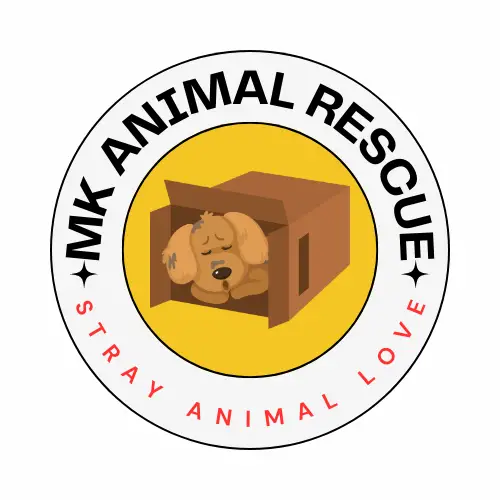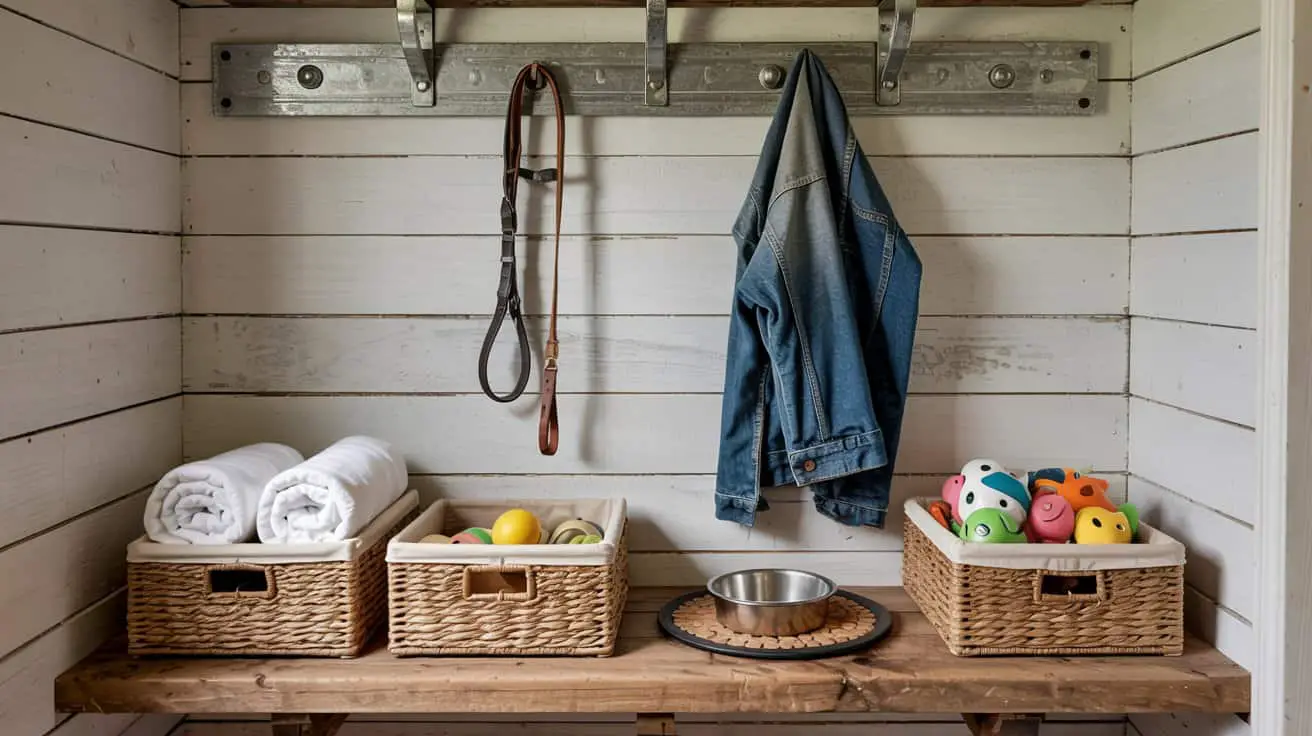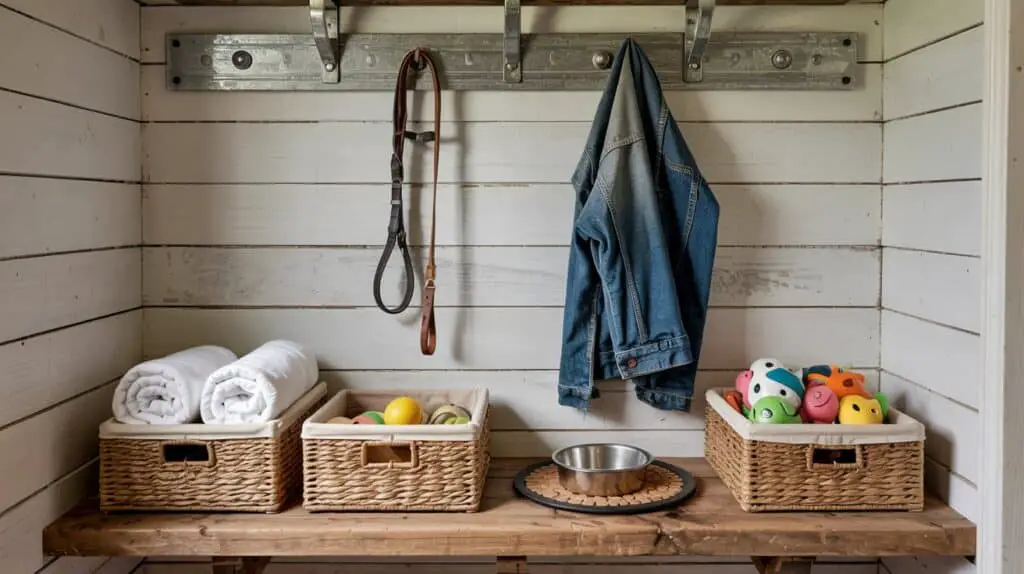
Let’s face it: having a dog means having stuff—leashes, treats, poop bags, half-chewed toys, and enough random towels to outfit a small spa. And if you live in a smaller space or just like things to feel, you know, somewhat put together, it’s easy to feel overwhelmed.
When we first brought our pup home, I had this idea that we’d keep it minimal. One leash. One bin of food. One charming basket for toys. Fast forward two months and there was an explosion of dog gear in every room—including a mystery sock in her water bowl.
So whether you’ve got one floofy sidekick or a whole house of paws and tails, these dog supply organization ideas will help you keep things calm, cute, and functional. No ugly plastic tubs required.
Create a Mini Dog Closet (Yes, Really)
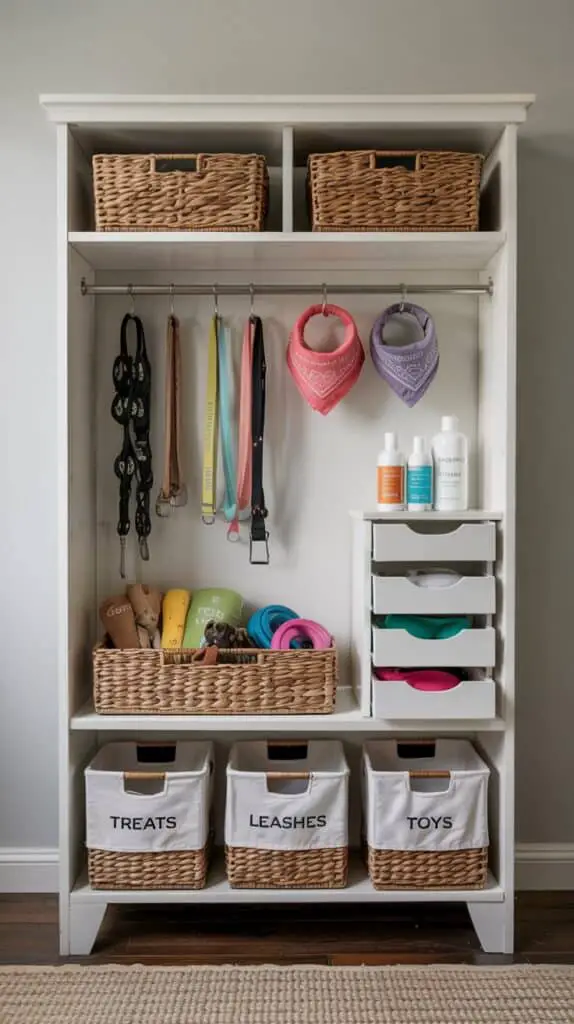
If you’ve got a spare cabinet, hallway nook, or unused linen closet, it’s the perfect spot to create a dedicated dog closet. Stackable bins for toys, labeled drawers for grooming tools, and a small hanging rod for harnesses and jackets turn chaos into calm.
This works especially well in homes with multiple pets or anyone juggling dog boarding facility ideas from home. Use woven baskets or clear containers depending on your vibe. Don’t forget a clip-on light if it’s a deep space—it makes grabbing the leash during those chaotic morning walks way easier.
Use a Tiered Cart for Pet Supplies in Small Spaces
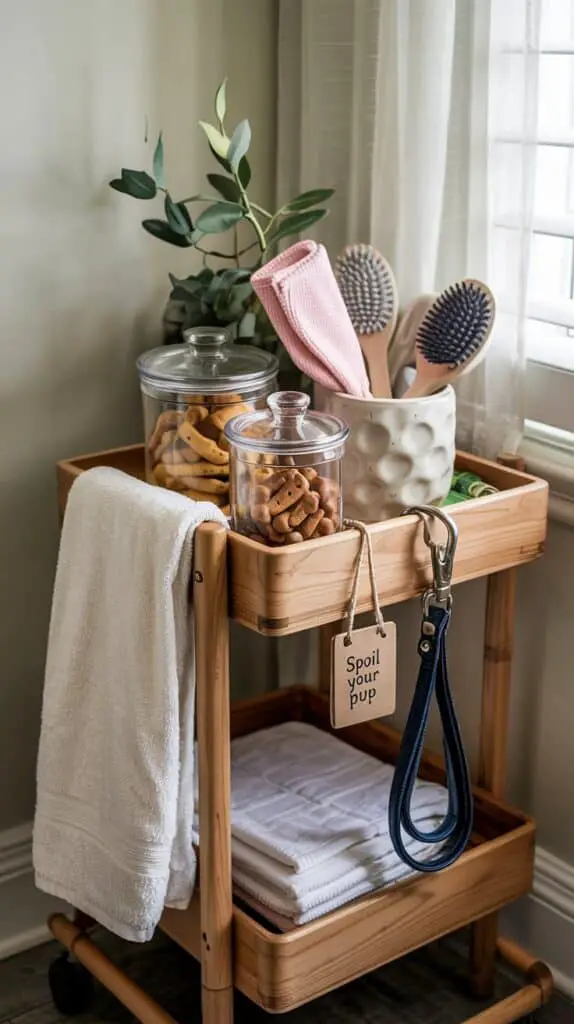
No closet? No problem. A tiered rolling cart (like the kind used for art supplies or nursery storage) makes an ideal dog stuff organizer for apartments. One tier for food/treats, one for toys, one for waste bags and meds.
The best part? You can roll it between your kitchen, hallway, or wherever your dog hangs out most. Add labels, swap out plastic for little bins or pouches, and it’ll look aesthetic and be practical. Bonus points if you stash a lint roller or towel on the side hooks.
Design a Feeding Station That’s Tidy and Cute
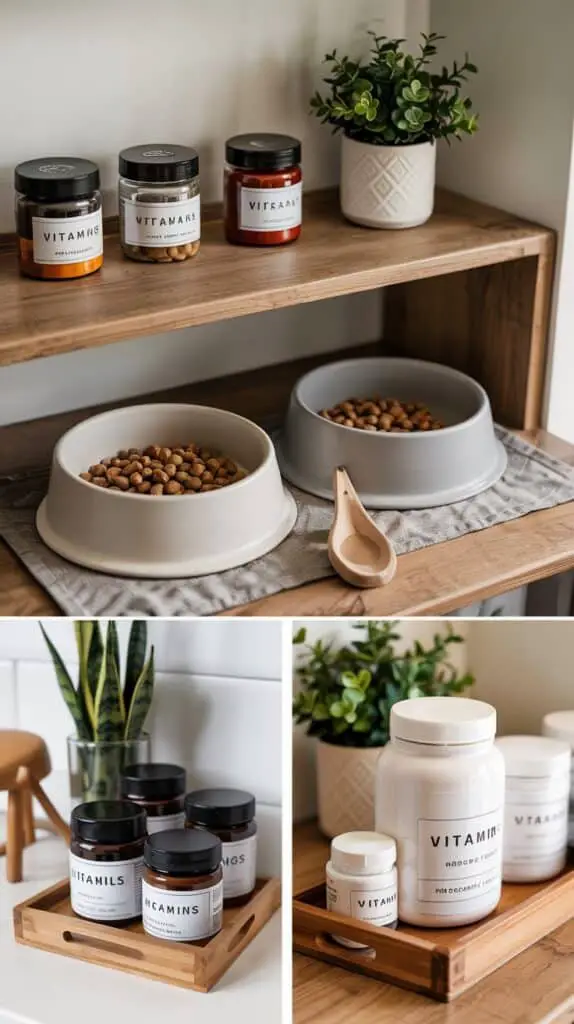
A DIY dog food setup doesn’t have to look like a cereal station. Try a wood or metal stand that fits right into your kitchen or mudroom, and use airtight glass or matte plastic containers for dry food and treats.
Mount a small shelf above the bowls to hold grooming wipes, vitamins, or spare collars. Add a hook or clip for the scooper. You can even tuck the whole setup inside a low cabinet if you’re short on space. The key is making it part of your home—not something you have to hide when guests come over.
Hang a Peg Rail or Wall Grid for Everyday Gear
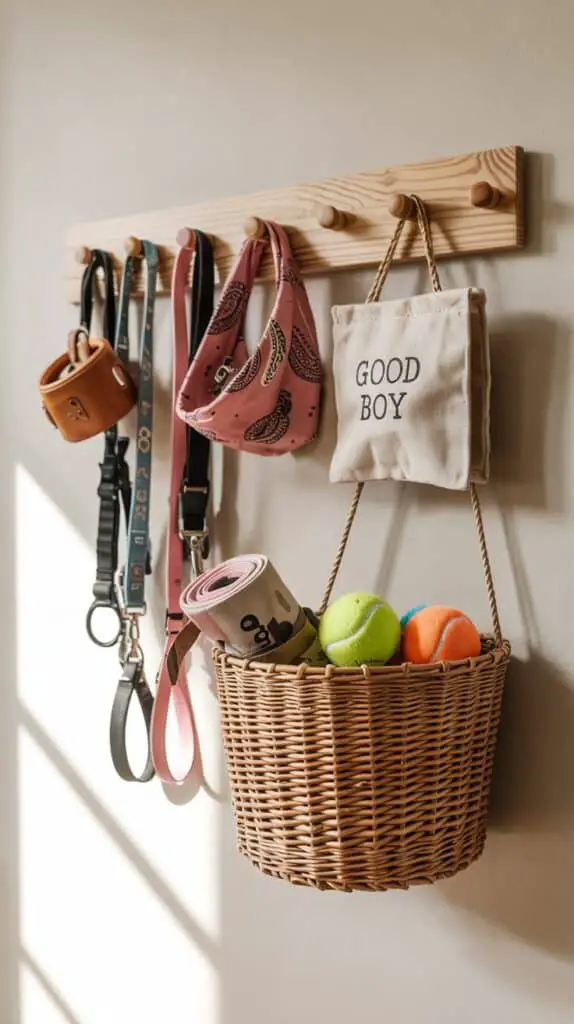
This one’s for those hallway-drop-zone disasters. Install a wooden peg rail or a metal wall grid (like the kind used in home offices) and use it to hang collars, bandanas, extra leashes, and keys.
It keeps dog gear off the floor and doubles as wall decor if you keep the palette cohesive. You can even clip a mini canvas pouch to the wall for poop bags and spare tags. It’s like a little dog command center—with serious Pinterest potential.
Store Grooming Supplies in a Portable Caddy
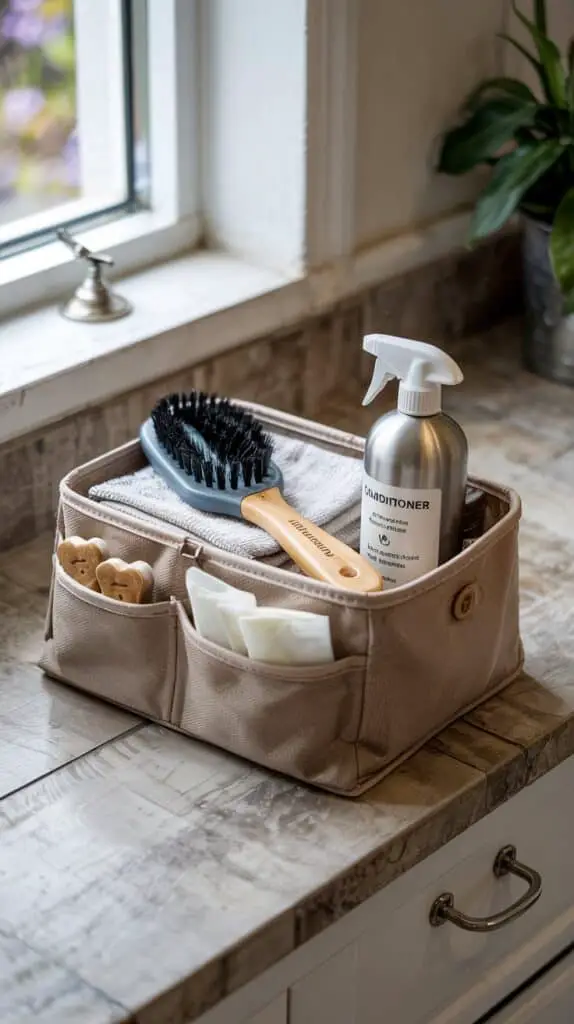
Instead of scattering brushes, shampoo, nail clippers, and flea meds all over the bathroom, try stashing them in a simple caddy or makeup organizer. You can store it under the sink or in your dog closet.
Choose a material that’s easy to clean—plastic, silicone, or sealed wood. Add a small towel, toothbrush, and extra treats if you use bribery (who doesn’t?). Now when it’s bath day or brush time, you’ve got everything in one place—no more rummaging under the sink while holding a wet dog.
Use Decorative Baskets or Crates for Toy Rotation
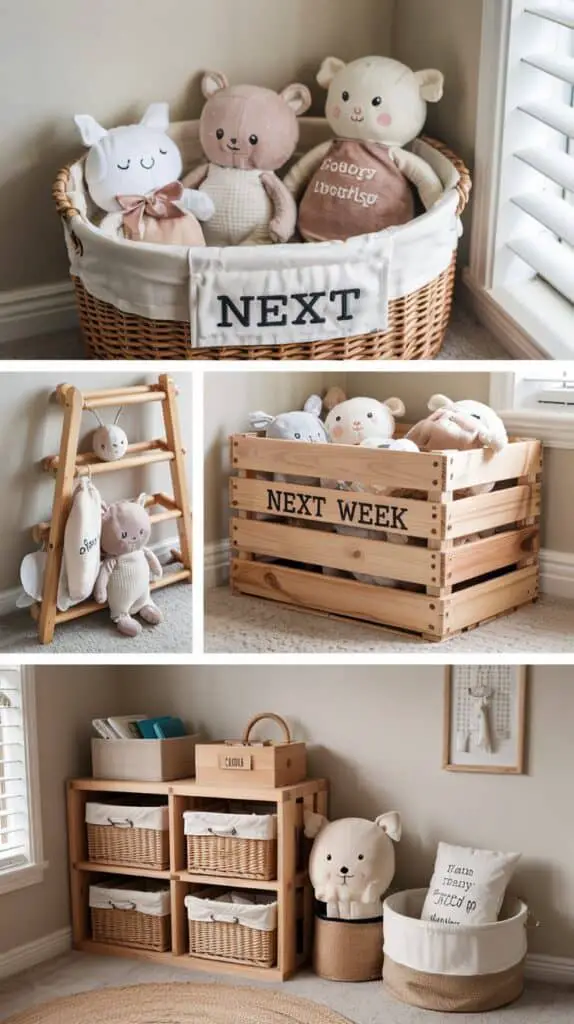
Dogs don’t need access to every toy all the time. Keep the space neater (and playtime more exciting) by rotating toys weekly. Use labeled bins, baskets, or even cute wooden crates.
Place one basket out and keep the rest stashed on a high shelf or inside a closet. It keeps your space looking aesthetic, cuts down on toy clutter, and somehow makes that squeaky dinosaur exciting again after a week away.
Add a Soft Barrier to Zone Off Dog-Friendly Spaces
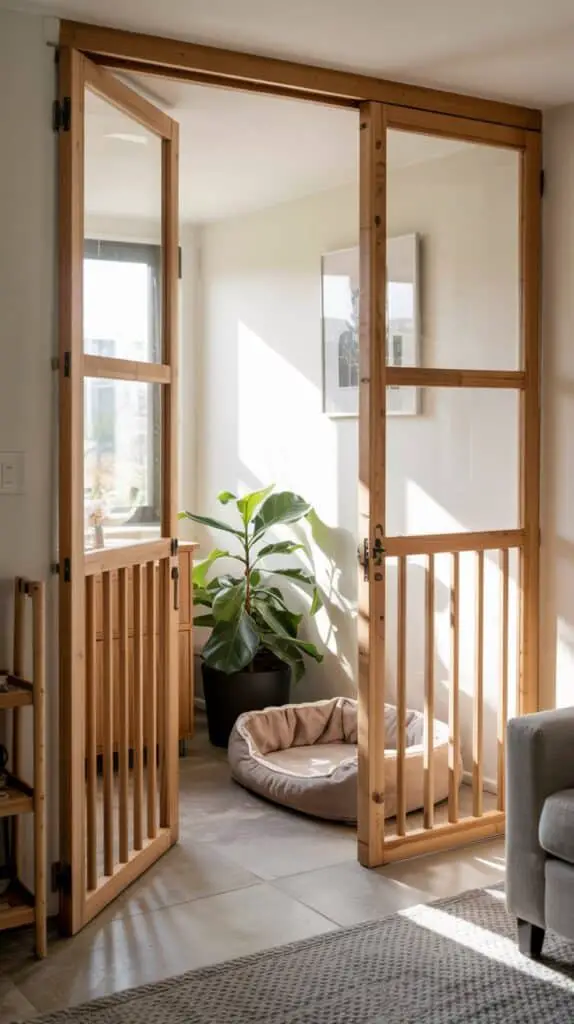
If your pup loves the whole house a little too much, a soft dog barrier can create calm zones—especially helpful in open-concept homes or apartments. Use a foldable wooden gate or DIY a canvas curtain between spaces.
This can be part of your pet supplies organization too: hang a few supplies on a nearby hook or shelf, so the zone also becomes a “dog corner.” Bonus: it stops muddy paws from sneaking into the dining room while you’re not looking.
Repurpose an Entryway Bench or Cabinet for Dog Storage
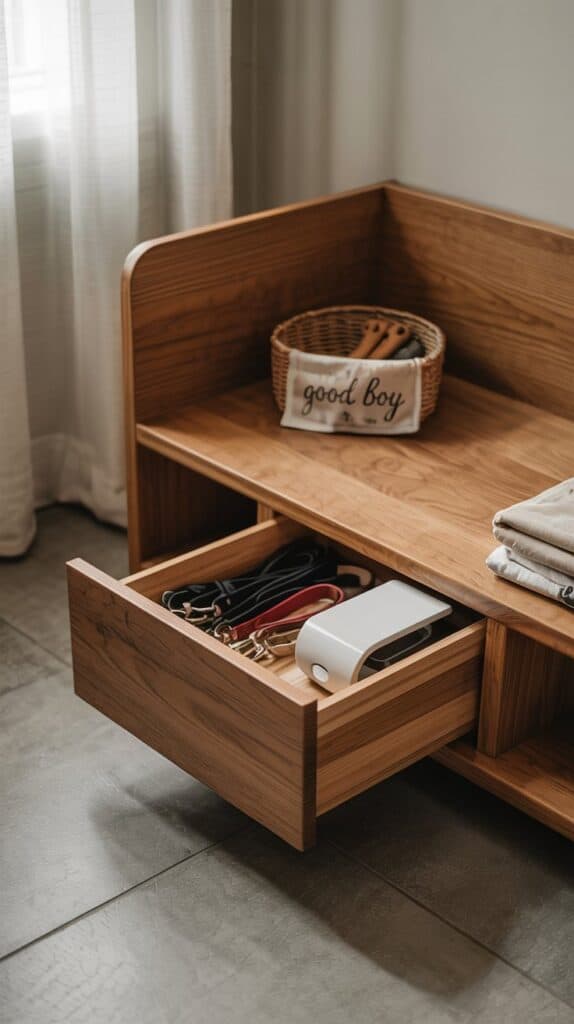
Your entryway is probably already the go-to leash-drop zone, so why not turn it into a smart storage spot too? Use a cabinet with hidden bins or drawers for treats, waste bags, and wipes.
Tuck a folded towel underneath for rainy-day paws. Add a bowl of “walk essentials” on top (keys, collar, clicker). It keeps everything organized right where you need it, and makes heading out with your pup way less chaotic.
Build a Mudroom-Style Pet Station
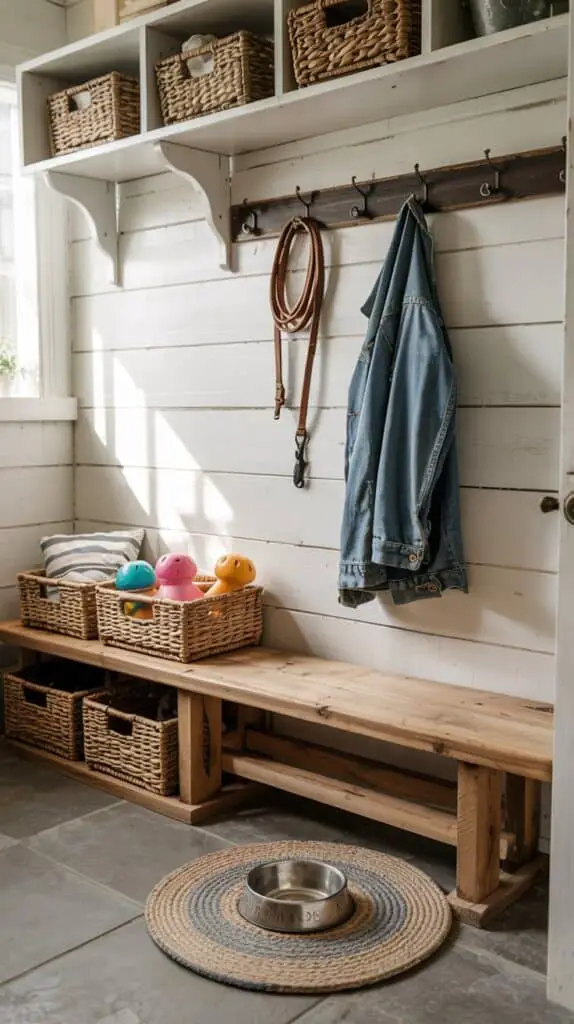
Got a little extra room near the laundry or garage? Use it! A low shelf, a few baskets, hooks for leashes, and a mat for boots or food bowls can create a mini dog mudroom.
This works especially well for families or homes with multiple dogs. It’s one of those dog boarding facility ideas that totally works in real homes, not just kennels. Keep it neutral and textured—rattan bins, wooden shelves, ceramic jars—and it’ll blend right in.
Keep Travel Supplies Packed and Ready to Grab
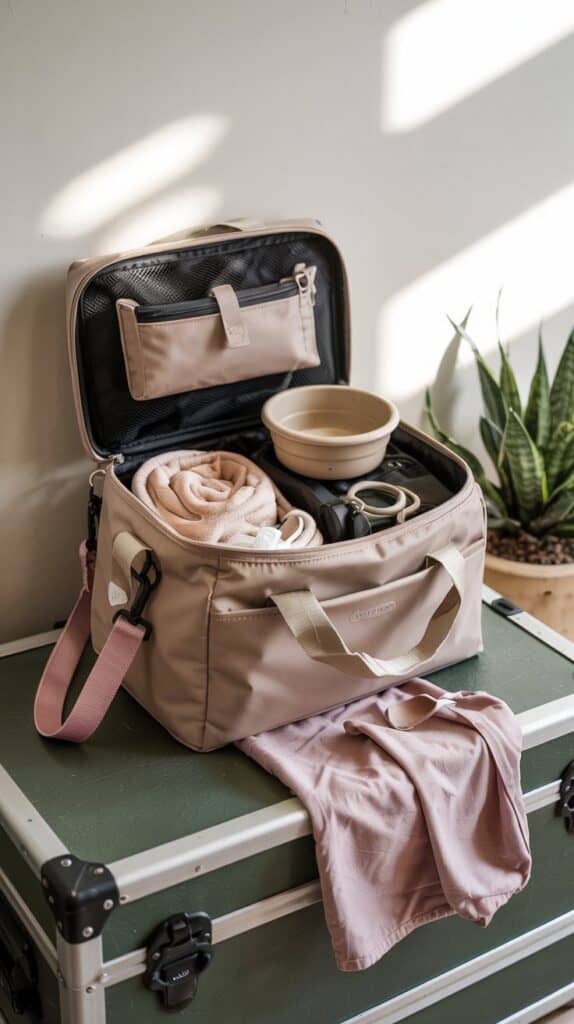
Ever tried to pack for a weekend trip with your dog and realized all their gear is scattered everywhere? Keep a go-bag ready. Use a soft duffel or storage cube and fill it with: a collapsible bowl, backup leash, poop bags, travel wipes, and a sealed container of kibble.
Store it on a closet shelf or in the car trunk. It also works as an emergency backup if you ever forget something on the way out. And yes, you can make it aesthetic—canvas bags, minimal labels, soft colors. Even your dog’s travel game can look organized.
Final Thoughts
Dog supplies don’t have to take over your home—and you don’t need a custom mudroom or a massive house to stay organized either. Whether it’s a rolling cart in your apartment hallway or a labeled bin under your stairs, these ideas help you create a space that feels intentional and calm (even if your dog is… not).
So next time you trip over a tennis ball or dig through a drawer of tangled leashes, maybe it’s time to try one of these ideas. Your home will thank you. Your pup probably won’t—but that’s okay too.
